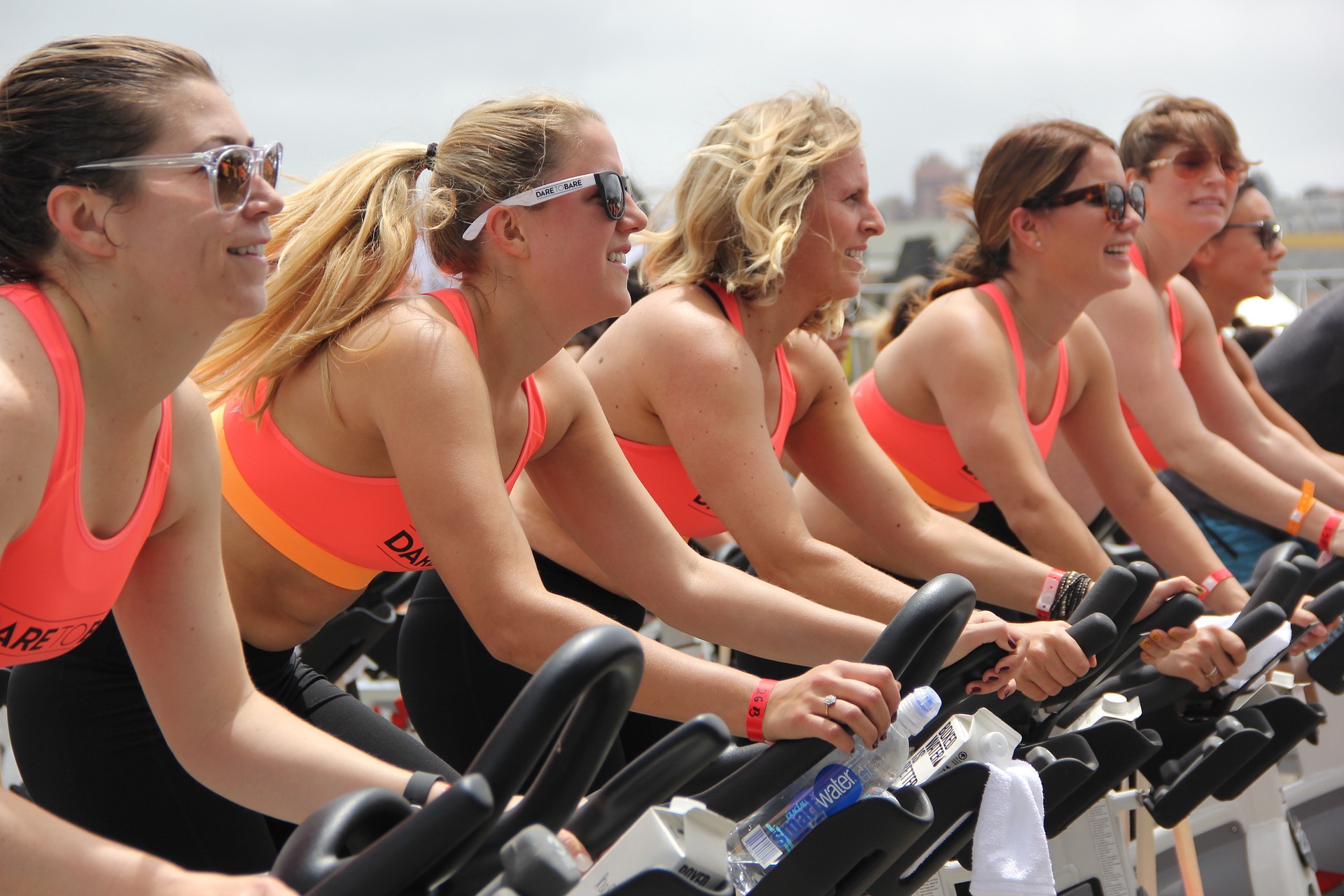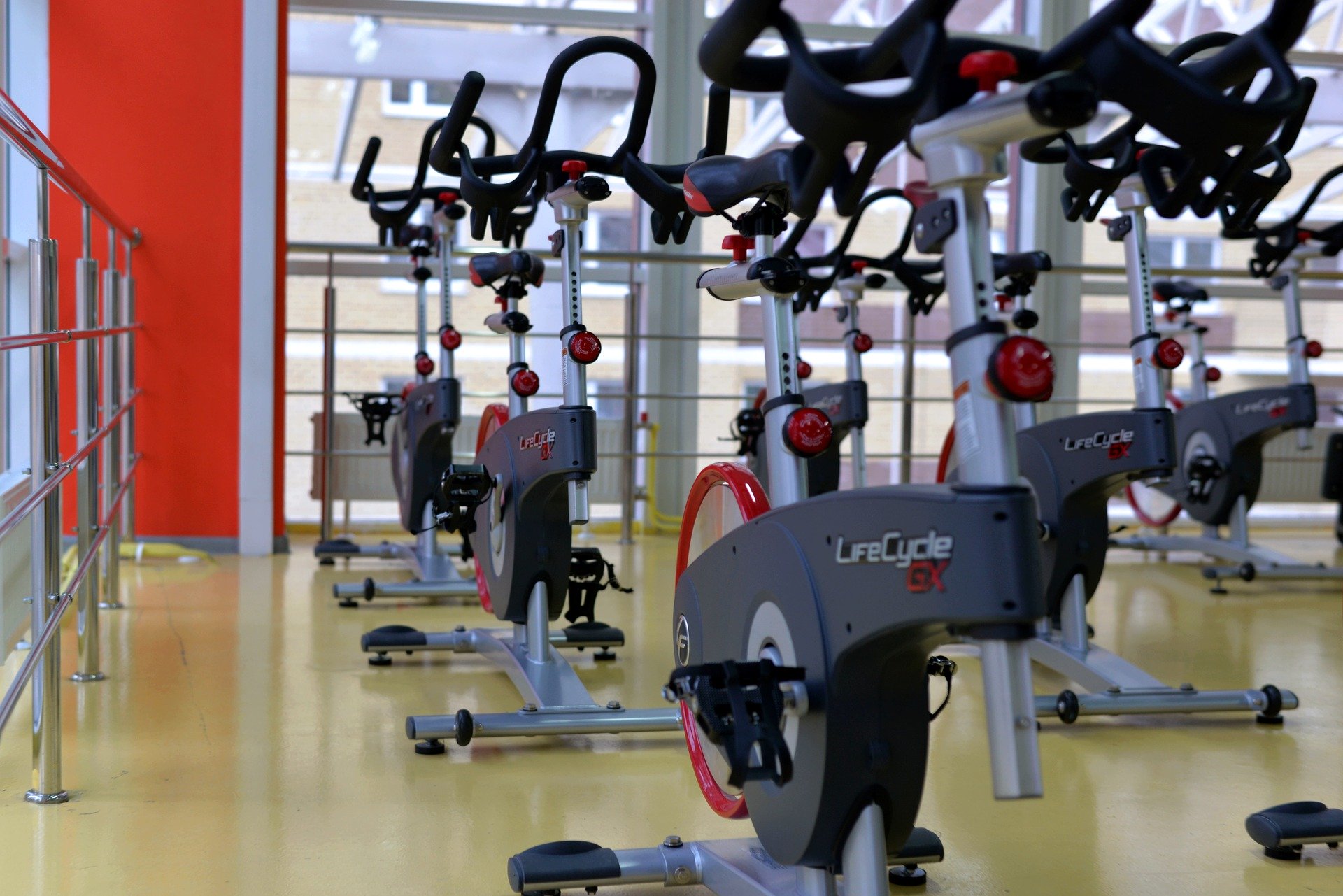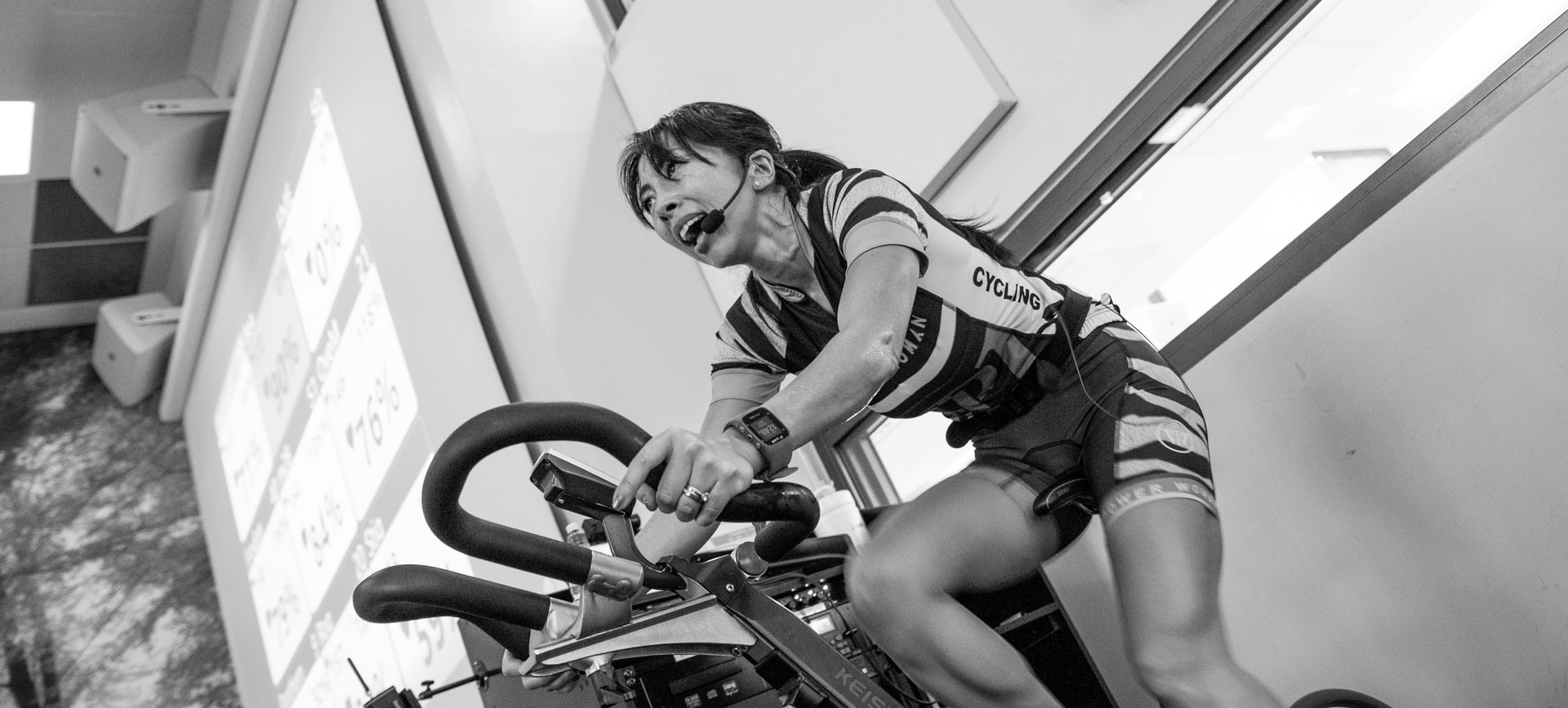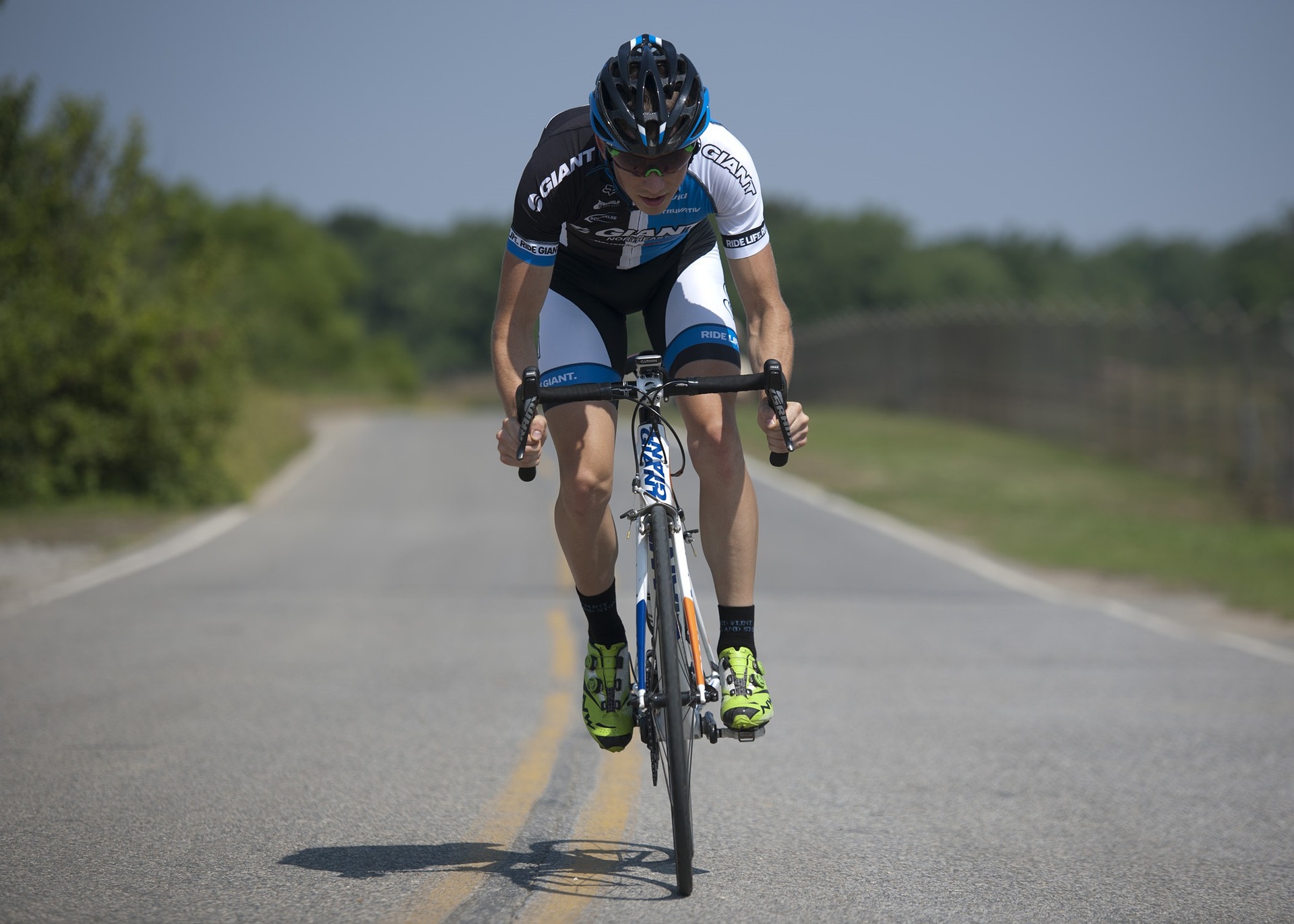It’s hard to stay active during the lockdown, especially when we lose motivation and find it much easier to sit on the sofa. It becomes a huge challenge, particularly for avid cyclists, to transition to indoor cycling. We become used to the wind blowing through our hair, the sound of the tires on the tarmac, and the thrill of being nimble enough to navigate the roads. But, when it comes down to jumping on the indoor bike, we never consider whether we are doing it wrong.
Be it part of a gym routine or helping towards the fix of cycling whilst in lockdown, not every cyclist has the fine art of pushing pedals on an upright bike mastered. And that’s completely understandable as it’s a whole different ball game.
If you ask us, implementing cycling into your gym routine is crucial to your fitness as a cyclist. Firstly, if we’re not keeping on top of our fitness, we’ll notice a huge decrease in our performance. This has never been more important whilst activity levels are decreasing across the planet.
Stationary bikes are fantastic for diversifying your workout, keeping you motivated enough to develop on your personal bests. But, here’s the thing: if we’re not utilizing indoor cycling as well as we could be, we run the risk of not hitting our goals or, even worse, causing our form to go downhill.
Pro cyclist or not, this could be down to inexperience, lack of understanding, or awkwardness on the saddle of your indoor trainer. The way you approach indoor cycling should be looked at differently to cycling in the big wide world, as whilst it may seem similar on the surface, it couldn’t be more different from your usual ride.
Why? Well, let’s take a look at this in more depth to hopefully touch in improving your ‘inner-indoor-cyclist’.

1. Your cycling set up needs work.
If you’re new to cycling indoors, you may need to pay more attention to your set up. There are a few different scenarios as to why the set up is out. It could be that the bike you’re using at the gym had someone on it before you or it could also be that the upright bike you ordered online needs altering for your size.
Whatever the reason, it’s pretty important to allow your leg to extend to the perfect angle whilst making full contact with the pedals. This can be down to something as simple as the seat height. Use your hip as the guide. Your hip is the perfect guide to know where the seat will be in relation to your ride height. Once you’ve nailed the perfect position, powering your strength into the pedals will be much easier.

Focus on the seat first and then move to the handlebars. Now, the handlebars are subjective to choice. If you’re an outdoor rider, this is where your instinct comes through and makes us lower the bars to match the style of riding we prefer. But, it’s worth noting that if you suffer from a bad back then you can also increase the height of the bars to take the pressure away from leaning over the bars. You can also slide the handlebars back and forth to perfect your positioning. Find a set up that feels right and you will be sure to get the most from the session
2. The routine needs structure
It’s quite easy to jump on an indoor bike and start racking up those digital kilometers but take it easy there, cowboy. It’s not all about turning those cranks as many times as possible. We need an organized routine to maximize our performance. Decide on whether you’re cycling for endurance, strength, or calorie burn and find the routine that fits in with your goals.
A brilliant example of strength would vastly differ from endurance. Hacking away at the pedals is a sure-fire way to tire you out quicker and prevent you from working on your slow-twitch muscle fibers. Here’s a simple structure to follow to build stamina:
- 5 minutes warm-up
- 1 minute of 80 RPM
- 30 second recovery
- 2 minutes of 90 RPM
- 30 second recovery
- 2 minutes of 80 RPM
- 1 minute recovery
- Repeat drill 3 times
- 1 minute cool down

3. You’re skipping the warm-up
Would you get in your car and jam the accelerator down the whole way to work? Probably not. Your engine will feel the strain and eventually break and our bodies are no different. A warm-up is essential to preparing our bodies.
If you start to pedal hard with no warm-up, you’ll quickly begin to feel that burning sensation in your quads. Your lactic acid will begin to build up and there is no adequate blood flow to take it away again. We need to ease into a workout to ensure our heart rate is elevated enough for our body to start pushing oxygenated blood into the muscles. Your legs will feel less stiff and your joints will flow smoothly in each pedal stroke.
Depending on the amount of time you plan on riding contributes towards the times of your warm-up. Anywhere from 5-10 minutes of moderate cycling should be enough to prepare you for an indoor cycling session.
4. Your music choice is all wrong
Listening to high BPM music can help with timing your pedaling, thus getting you into a rhythm on the ride. This is a luxury of indoor cycling and a huge change in riding style when we compare this to cycling outdoors. Cycling with music is a welcomed novelty when indoor cycling and can help you stay in the zone when pushing past the pain during that final stretch. So, scrap that Ed Sheeran playlist and start listening to something a little pacier.

5. You think your swimming
Holding your breath whilst exercising is a terrible habit to get into, but when we work out on our own we rarely have someone telling us to breathe. Getting into the routine of breathing during intense cycling will see us through the other side with less pain.
Muscles function by having a constant supply of oxygen. Breathing allows oxygen into the body, which is carried by the blood to the muscles that are being worked.
If there is no oxygen or nutrition flowing to the muscles, the build-up of lactic acid can cause a searing burn, which makes it impossible to push through. Remember; when there is pain and burn focus on breathing through it to let the blood replenish the oxygen that your muscles are screaming for.
6. Stopping makes it worse
The momentum of your cycling is what makes it easier to carry on. There is nothing worse than having to stop when cycling outdoors because of the effort it takes to get things back into motion. It requires energy to build up speed again and if we’re doing this too often, we’ll use up our fuel reserve quicker meaning exhaustion will creep up on us a lot faster.
Keeping in the zone through music prevents cycling failure, which in turn, allows you to build stamina or strength – a very important focus of your goals.

7. You’re training the wrong muscles
It’s quite easy to tense up when riding hard. When you’re in the zone, holding the handlebars automatically becomes your stress ball and it’s essential to remember that the bars are only there to stabilize you whilst cycling.
Most riders find themselves leaning over the handlebars leaving them to support their entire weight, but this takes the main objective out of your efforts.
When cycling, the focus is on your quads and core. By transitioning your weight ends up wasting valuable energy, as you will overcompensate when tuning the cranks due to a terrible positioning.
A top tip to implement through your indoor ride is to flex your fingers every so often when riding. This will allow you to release some tension.
Summary
Cycling indoors can be just as enjoyable as cycling outdoors and now you know the areas to improve your form; there is no excuse not to be taking to the stationary bike more often.
It’s time to get to work and fix the issues that are holding you back from the perfect indoor cycling session. Have you seen any areas that you can improve on? Try the 7-point checklist and test it for yourself.
Guest Contributor Bio
Alex is a cycle expert at Pedallers and focuses on reviewing road bike accessories and general cycling. She searches for the most up to date products that match the needs of cyclists across the world. Whether it’s recent news or the best bike set-ups, Alex is a trusted source for anything around cycling.



